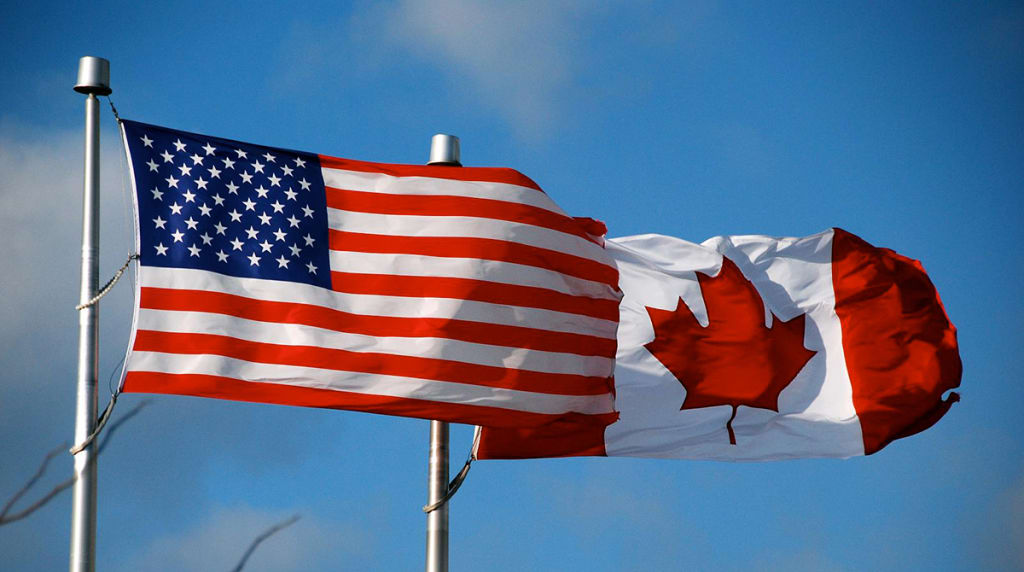Juxtaposition
Looks can be deceiving

My most formative years were shaped by my mother and occasionally my Scottish uncles. They spoke "British" English, which is to say, they understood English like our brethren across the "pond". When they used the word 'juxtaposition', it was from the literal Latin and French, that is, the act of placing two objects side by side, or this near that. Even today, OED relies on this literal, juxta from Latin means nearby, and position from the French requires little translation as it is the same in English. I was an incorrigible child so I might have remarked on the juxtaposition of classroom desks or stores in a shopping plaza. Rightly, my elementary school classmates barely tolerated me. But, as I grew older, teachers would correct my misuse of the word. In America, juxtaposition is things/persons/ideas placed side by side to emphasize the contrast of one to the others – the hero and the villain, for example. I rarely commend American English on making improvements to an already robust British one, however this might be a good illustration. If I want to talk about you and me at a hockey game, to describe our arrangement as a juxtaposition is being haughty, superior, condescending to the listener. A simple, “we were sitting side by side” or even simpler, “we were together” will do the trick. Most people would paint the correct mental picture. This leaves juxtaposition without a home in England. Why would I use it as it serves no purpose except to annoy?
However, the dictionary examples of American usage do not capture the true subtlety of the word. To say that it is a physical or literary act of placing things, people, or ideas side-by-side to demonstrate their contrasting qualities is missing the point entirely. My favorite example that reveals the full extent of juxtaposition is Canada and the United States. Since a child, I have had my feet firmly set on each side of Lake Ontario, like some Titan, my left in Toronto, my right in Rochester (looking past Watertown to Black River?). To the casual American viewer, Canada seems so much the 51st state (more so than Puerto Rico). I have heard people say as much. Where I grew up in the United States, sixty miles from Niagara Falls, for many of my classmates, what they knew of Canada was crossing a bridge, explaining their tourist intentions, receiving a warm smile in return, and enjoying the view from the “better” side. Yes, Canada was the country that offered better views and more souvenir shoppes. For most Americans, Canada is just foreign enough – same electricity, same telephone country code (1), mostly the same food with “exotic” alternatives (poutine?), same people with the same faces, same language with a few quirky adds – “eh” and too many “sorry’s”. Two countries juxtaposed and arguably in Canadian English the truth ends there. However, in American English the juxtaposition is a function of the differences, not so obvious until you place them side-by-side and take a deeper dive.
The good jumping off place is to start at the beginning. It is mere coincidence that each country celebrates its Independence Day the same week. When you look past the picnics and fireworks, each country’s citizens are celebrating a very different occasion. Canada Day (or what I like to think of as Dominion Day) recognizes Canada’s evolution from colony to sovereign nation, achieved peacefully. It was more akin to a child growing up, reaching adulthood, and leaving home on a new adventure, still very much part of the family. Most Americans are unaware that Canada is:
- A federation, with provinces that are not states and each with significantly more autonomy than any American state might have.
- A constitutional monarchy and its head of state is Queen Elizabeth II, which explains her crown-laden portrait on the currency.
Thus, Dominion Day is a celebration of Canada’s “bar mitzvah”, its coming of age. By contrast, the Fourth of July is all about the Revolution. It is about an angry, mistreated, and disgruntled child running away from home, and a parent’s futile and violent attempts to bring her back into the fold. Even as she achieved adulthood, the parents were still lashing out at her using Canada as the base of operations. Even in religion, the Canadian Church of England evolved into the Anglican (Anglia, England) while in the United States, it became, in 1789, the Protestant Episcopal church with its own Presiding Bishop. No Archbishop of Canterbury desired for these brethren. It is hard to imagine a cleaner break than the one between the United States and Great Britain or a more binding one than between Canada and her mother. The contrast is raw when you observe the citizens of each in celebration. As with all holidays, Canadians drive and shop. Americans immerse themselves in patriotic fervor with a zeal as if they had personally crossed the Delaware with that semi-deity, Washington. Americans can name several of the founding fathers (but not all) and Canadians likely can name just one of the 36 (MacDonald) except the Quebecois who would include Cartier.
That difference between evolution and revolution defines so much of what we understand as the mindset of Canadians juxtaposed to Americans. The morally outraged slave owners that founded the United States cared little for the rights of their human property but were much concerned for their own individual rights. The Bill of Rights emerged from their antagonism towards centralized government and kings. It is hard to imagine so much male white privilege feeling so oppressed by a bunch of bureaucrats in Westminster, but persecution is in the eye of the beholder. Thus, freedom of speech, freedom of religion, the right to assemble (protest – Vietnam, police racism), and the right to bear arms, each codified into its Constitution, the guiding document of all things governing. Canada has a bill of rights, too. It took nearly one hundred years (1960) after the founding of the nation. The bill of rights did not quite make its way into its constitution. It is a federal statute. It could be repealed by parliament tomorrow. Yet, for all the concern for individual freedom, Great Britain, without a bill of rights, abolished slavery in what is now the province of Ontario in 1793, a mere 18 months after the passage of the US Bill of Rights. King William IV gave his assent to the Slavery Abolition Act 1833. It eradicated the practice virtually everywhere in the British empire including across all of Canada. All this was achieved without a Civil War and the senseless death of three-quarter million of its citizens, merely the passage of a parliamentary act. That is not to say that racism was ever eliminated. English and Scottish Canadians have memories as short of their American cousins. Their capacity for looking down their aquiline noses at any immigrant or First Nation peoples would seem to be infinite. There is no juxtaposition to be discovered there.
Ultimately, it is that difference between the Canadian mentality that settles big issues with little violence versus the American psyche that relishes its divisions, the individual over the whole, that defines juxtaposition. On my journey from British/Canadian English to school-taught American English, juxtaposition has come to mean that at first glance two objects placed side by side can appear the same or familiar, but it is only when one examines closely that truths might be revealed. Thus, it is with us. Juxtaposed, no one would ever know the truth until he reads our emails. The guess would be father and daughter or future trophy wife. The truth is a teenage boy trapped in the body of a paunchy elderly gentleman and a beautiful young woman with wisdom and maturity well beyond her years. What I feel is infinite because that is the idealism of youth and what you feel is measured because that is what life’s experiences teach us. I emote and then emote some more, and you are guarded, reserved, enigmatic. That is juxtaposition, the surprise of two people side-by-side about whom no one else can tell the tale.






Comments
There are no comments for this story
Be the first to respond and start the conversation.